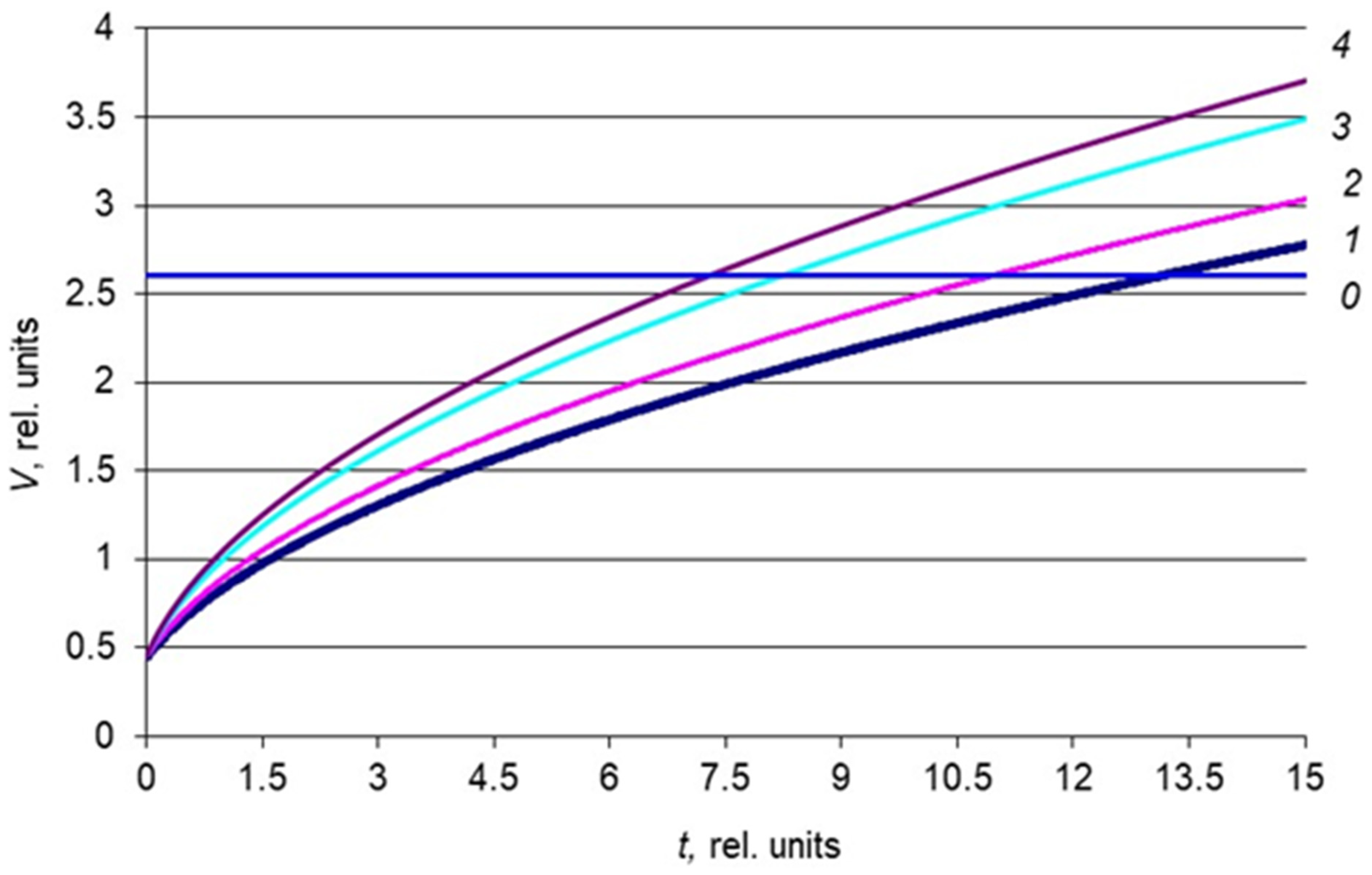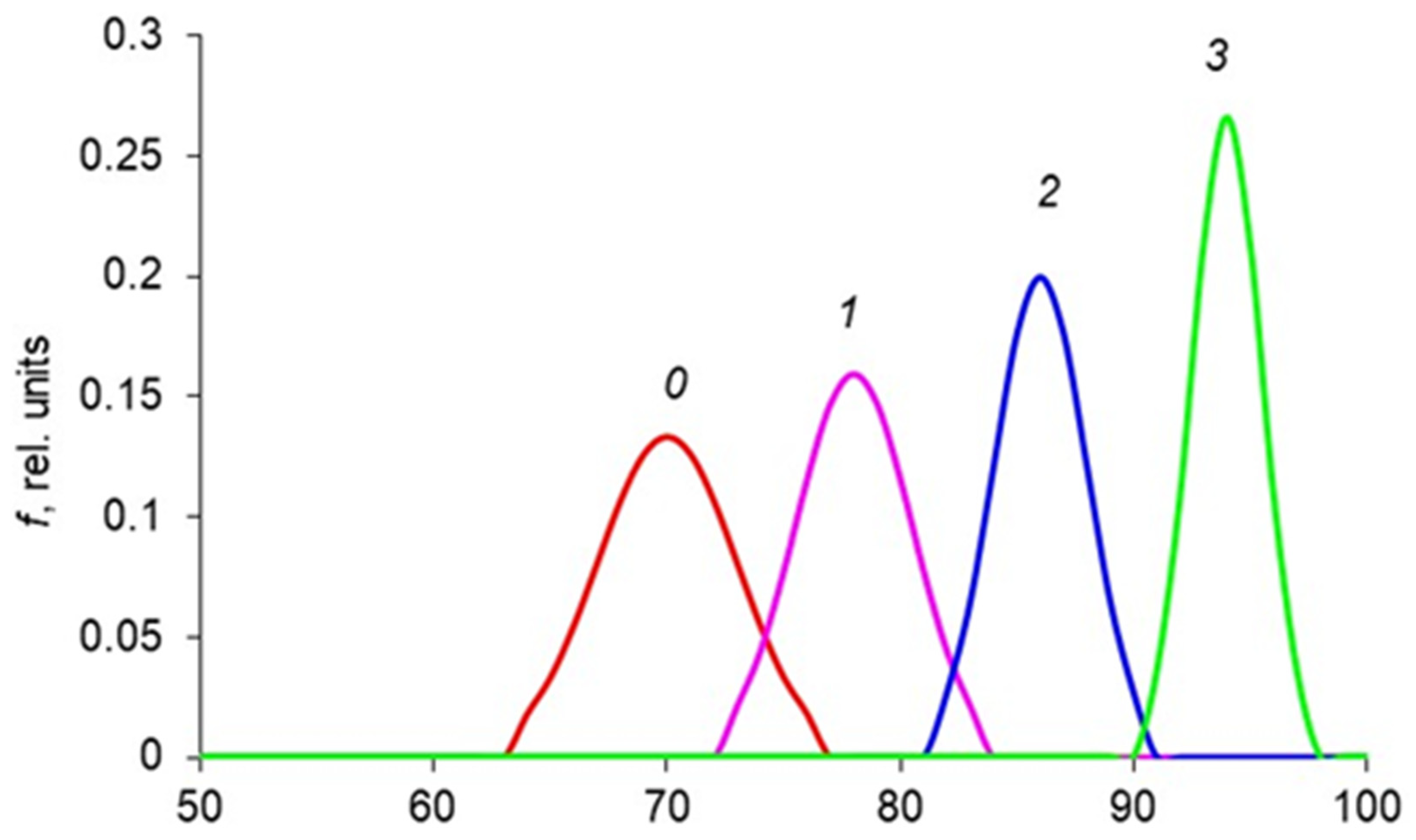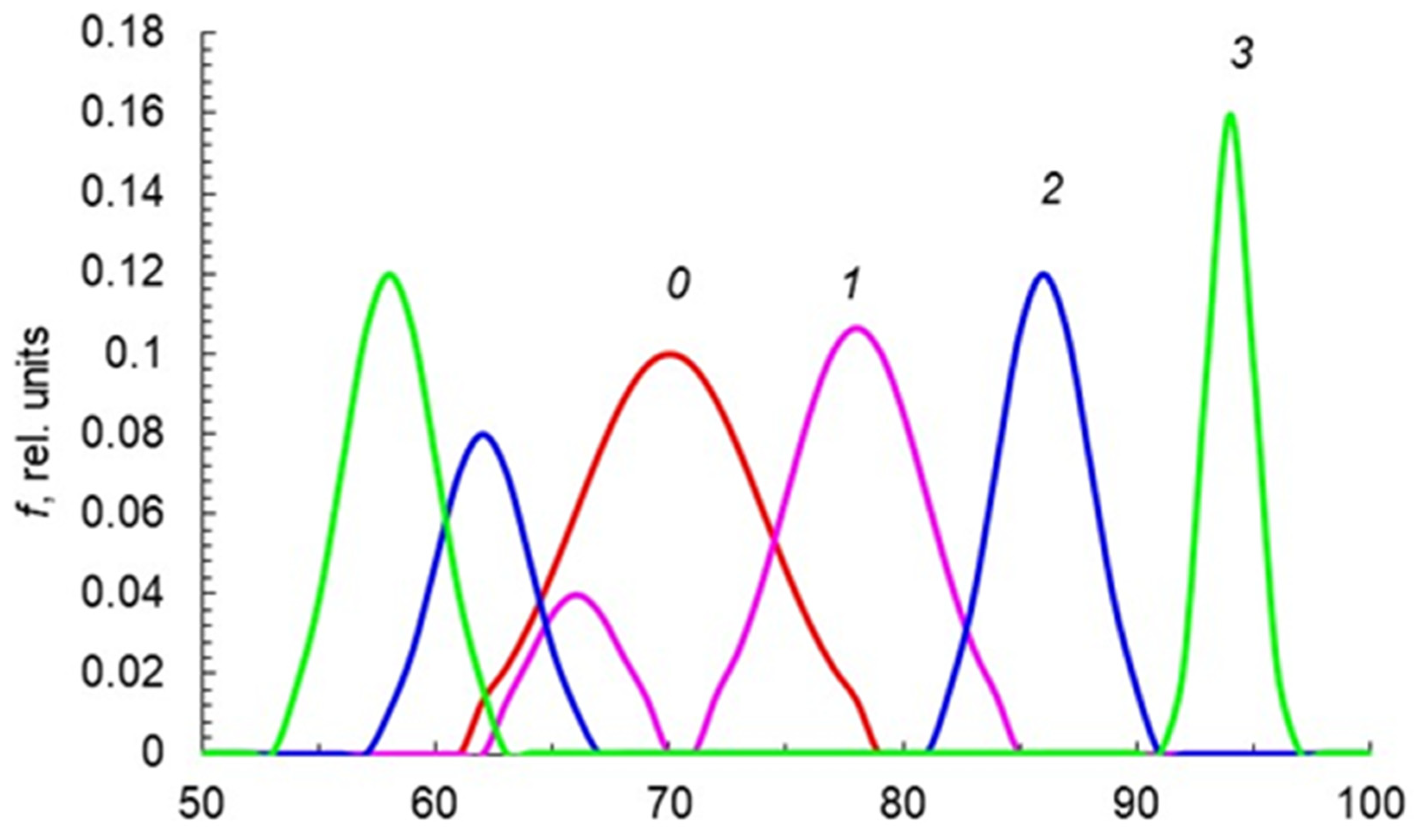Sustainable Language Training for Engineering Students: Integrating Resource-Efficiency into the Course Content through the Educational Process
Abstract
1. Introduction
1.1. Resource-Efficiency and Sustainability: Motivation and Background
1.2. A Definition of Resource Efficiency
2. Materials and Methods
2.1. Methodology
2.2. Resource-Efficient English Language Training
- Efficiency of students’ self-education and creativity, and their readiness to take responsibility for extracurricular autonomous learning;
- The stage wise transition from an outer instruction of educational process to students’ self-management;
- The continuity of monitoring, feedback, and correction, including students’ self-control and self-correction;
- Individualization, reciprocal design of personal educational strategies;
- The wide range of educational content and its interpretation;
- Development of academic and professional communication, integration into international educational and professional environments, e.g., teleconferencing, enabling academic mobility, activities such as grant applications and publications;
- Effective use and development of information tools, with intelligent multimedia programs and systems, expert systems, training facilities, and other resources providing high levels of engineering competence and productive efficiency.

2.3. Assessment and Evaluation of the Framework
- Application of a variety of diversified assessment methods and procedures, including experts’ participation.
- Not only the theoretic knowledge levels of students should be measured, but also their manner of setting and solving tasks as well as the choice of necessary resources.
- Final estimates of RE and FL communicative competence formedness are defined during the experts’ discussion and data analysis.
3. Case Study
3.1. The Challenge of Teaching Resource Efficiency
3.2. Resource-Efficiency at Tomsk Polytechnic University
- Safe environment;
- Sustainable energy;
- Medical engineering;
- Planet resources;
- Cognitive systems and telecommunication;
- Social and humanitarian technologies of engineering.
- System knowledge about the main types of resources;
- Deep understanding of the necessity to enhance the efficiency of natural resource usage;
- Readiness to solve RE problems in professional, social, and personal life;
- Ability to use the methods for evaluation of resource usage efficiency and analysis of resource life cycle;
- Ability to determine the ways of RE enhancement; ability to use the main methods of RE management in line with the ethical and legislative regulations.
- Academic/cognitive (learning activity, achievements).
- Social/behavioral (participation in extracurricular university activities).
- Emotional/affective (attitude to the university, institutional culture).
3.3. The Stages of Resource Efficient Second Language Training
- I.
- Motivational-diagnostic stage
- Diagnostics and evaluation of students’ motives, attitudes, their levels of communicative competence and language proficiency;
- Formation of students’ motivational readiness to master professional communicative competences;
- Formation of profession-oriented attitudes, notions, and standards of RE in academic, research, and communicative engineering activities.
- II.
- Project development stage
- Goal setting and specification of individual learners’ needs, objectives, language training expectations;
- Preparing individual learning pathways, self-study programs, schedules, completion of documents;
- Development of self-management and project work skills as the basis for RE in profession-oriented FL communication, academic, and research work.
- III.
- Implementation stage
- Formation of a profession-like environment (professionalization);
- Students’ autonomization in the process of learning and using English while tackling meaningful problems and tasks;
- Development of FL communicative competence components (discourse, linguistic, strategic, professional, sociocultural).
- IV.
- Enhancement stage
- Assessment and evaluation, collecting data, analysis of the main outcomes;
- Uncovering mishaps, carrying out correction, improvement of organizational, management and monitoring procedures;
- Adjustment of educational, technological processes in line with the results of RE indicators;
- Development of compensative and regulative mechanisms in communicative competence realization.
- V.
- Prognostic stage
3.4. Empirical Results and Discussion
- In total, 72% of the respondents (all) stated that the majority of students lack efficiency in their academic and scientific activities;
- In total, 88% of the lecturers claimed that students should be specially trained to make the right use of available resources (create new ones) and apply them to solve meaningful problems, achieve results, and organize their learning in a sustainable way;
- In total, 79% of students pointed out that pedagogical support, control, and regulation provide the effectiveness of the educational process;
- Agency, responsible attitude, and the ability to avoid distractors were marked as the main attributes for a resource-efficient learner;
- In total, 93% of the participants (all) agreed that there should be a more systematic approach to the development of a structured digitalized resource base with clear instructions, engagement features, and functions for customization, information exchange, communication tools, etc.
4. Conclusions and Contribution
Author Contributions
Funding
Informed Consent Statement
Data Availability Statement
Conflicts of Interest
References
- United Nations. Why does Resource Efficiency Matter? Available online: https://www.unenvironment.org/explore-topics/resource-efficiency/why-does-resource-efficiency-matter (accessed on 18 June 2022).
- Neto, V. Eco-design and Eco-efficiency Competencies Development in Engineering and Design Students. Educ. Sci. 2019, 9, 126. [Google Scholar] [CrossRef]
- Arthur, N. Supporting international students through strengthening their social resources. Stud. High. Educ. 2017, 42, 887–894. [Google Scholar] [CrossRef]
- Gordon, N. Sustainable Development as a framework for ethics and skills in Higher Education Computing courses. In Integrative Approaches to Sustainable Development at University Level; Springer: Cham, Switzerland, 2015; pp. 345–357. [Google Scholar]
- Dudley-Evans, T.; St John, M.J. Developments in English for Specific Purposes: A Multidisciplinary Approach; Cambridge University Press: Cambridge, UK, 1998. [Google Scholar]
- Chapman, C.; Muijs, D.; Reynolds, D.; Sammons, P.; Teddlie, C. The Routledge International Handbook of Educational Effectiveness and Improvement: Research, Policy and Practice; University of Oxford: Oxford, UK, 2015. [Google Scholar]
- Céspedes-Mota, A.; Shenoy, D.; Cárdenas-Barrón, L.E. Application of Lean Manufacturing Concepts to Evolving a Policy for Engineering Education. Educ. Sci. 2021, 11, 755. [Google Scholar] [CrossRef]
- Rubanov, V.G. Resursoeffektivnost—Vazhneyshiy Element Sovremennoy Ratsionalnosti. Transformatsiya Nauchnykh Paradigm i Kommunikativnyye Praktiki v Informatsionnom Sotsiume (Resource-Efficiency—The Most Important Element of Modern Rationality. Transformation of Scientific Paradigms and Communicative Practices in Information Society); Tomsk Polytechnic University Publishing: Tomsk, Russia, 2013. [Google Scholar]
- Lukianova, N.A.; Naletova, A.I. Resursoeffektivnost kommunikativnykh obrazovatelnykh tekhnologiy (Resource-efficiency of Communicative Educational technologies). Vestn. Nauk. Sib. Sib. Sci. Bull. 2012, 2, 91–96. [Google Scholar]
- Benson, P. Teaching and Researching Autonomy in Language Learning; Pearson Education Limited: Harlow, UK, 2001. [Google Scholar]
- Bouma, E. The challenge of project work in Russia. English 2003, 17, 7–10. [Google Scholar]
- Bridges, D. Personal autonomy and practical competence: Developing politically effective citizens. In Education, Autonomy and Democracy Citizenship; Routledge: London, UK, 1997; pp. 153–164. [Google Scholar]
- Ardashkin, I.B.; Boyarko, G.Y.; Dulzon, A.A.; Ushakov, V.Y. Osnovy Resursoeffektivnosti (Fundamentals of Resource-Efficiency); Tomsk Polytechnic University Publishing House: Tomsk, Russia, 2012. [Google Scholar]
- Abramova, R.N.; Bolsunovskaya, L.M.; Kemerova, N.S. Ore Geology and Mineral Exploration: Workbook; Tomsk Polytechnic University Publishing House: Tomsk, Russia, 2012. [Google Scholar]
- Bolsunovskaya, L.M.; Phillips, C.; Kolbysheva, Y.V.; Rymanova, I.E.; Strelnikova, A.B. Resource Efficiency in TPU: Imple-mentation of English Language E-courses. Proc. Soc. Behav. Sci. 2015, 215, 156–160. [Google Scholar] [CrossRef]
- Dulzon, A.A.; Petrovskaya, T.S.; Ushakov, V.Y. Osnovy resursoeffektivnosti–novaya distsiplina v uchebnykh planakh TPU (Resource-efficiency fundamentals—A new discipline in the curriculum of Tomsk Polytechnic University). TPU Proc. 2012, 320, 45–50. [Google Scholar]
- Dulzon, A.A.; Ushakov, V.Y.; Chubik, P.S. Resursoeffektivnost–osnova ustoychivogo razvitiya tsivilizatsi (Resource-efficiency as a Basis for the Sustainable Civilization Development). TPU Proc. 2012, 320, 39–46. [Google Scholar]
- Fedzechkina, M. Communicative Efficiency, Language Learning, and Language Universals; University of Rochester: Rochester, NY, USA, 2014; pp. 48–127. [Google Scholar]
- Gu, J.; He, C.; Liu, H. Supervisory styles and graduate student creativity: The mediating roles of creative self-efficacy and intrinsic motivation. Stud. High. Ed. 2017, 42, 721–742. [Google Scholar] [CrossRef]
- Kolawole, C.O.O. Resources and Resourcefulness in Language Teaching and Learning. Int. J. Lang. Lit. Gend. Stud. 2012, 1, 96–108. [Google Scholar]
- Engineers Mobility Forum. International Engineering. Available online: http://www.ieagreements.com (accessed on 18 June 2022).
- European Federation of National Engineering Associations. Available online: https://www.eesc.europa.eu/en/policies/policy-areas/enterprise/database-self-and-co-regulation-initiatives/3 (accessed on 18 June 2022).
- Meignan, Y.; Masson, C. Student autonomization: What are the educational benefits of the training device? The case of personalized support in the French vocational baccalauréat in food technology. Form. Empl. 2020, 151, 65–92. [Google Scholar] [CrossRef]
- Nunan, D.; Benson, P.; Voller, P. Designing and adapting materials to encourage learner autonomy. In Autonomy and Independence in Language Learning; Longman: Harlow, UK, 1997. [Google Scholar]
- Kemerova, N.S.; Gutareva, N.Y. Autonomous Language Learning: Study Guide; Tomsk Polytechnic University Publishing House: Tomsk, Russia, 2015. [Google Scholar]
- CDIO: An International Initiative for Reforming Engineering Education. Available online: http://www.cdio.org (accessed on 4 February 2022).
- Bandura, A. Self-Efficacy: The Exercise of Control; W. H. Freeman & Co: New York, NY, USA, 1997. [Google Scholar]
- Carr, P.B. The Measurement of Resourcefulness Intentions in the Adult Autonomous Learner; The George Washington University: Washington, DC, USA, 1999. [Google Scholar]
- Betts, J.E.; Appleton, J.J.; Reschly, A.L.; Christenson, S.L.; Huebner, E.S. A study of the factor invariance of the Student Engagement Instrument (SEI): Results from middle and high school students. Sch. Psy. J. 2010, 25, 84–93. [Google Scholar] [CrossRef]
- Engeness, I.; Lund, A. Learning for the future: Insights arising from the contributions of Piotr Galperin to the cultural-historical theory. Learn. Cult. Soc. Inter. 2020, 27, 100257. [Google Scholar] [CrossRef]
- Reise, C.; Müller, B.; Seliger, G. Resource efficiency learning game–Electric Scooter Game. Procedia CIRP 2014, 15, 355–360. [Google Scholar] [CrossRef]
- Jantassova, D.; Churchill, D.; Kozhanbergenova, A.; Shebalina, O. Capacity Building for Internationalization at a Technical University in Kazakhstan. Educ. Sci. 2021, 11, 735. [Google Scholar] [CrossRef]



Disclaimer/Publisher’s Note: The statements, opinions and data contained in all publications are solely those of the individual author(s) and contributor(s) and not of MDPI and/or the editor(s). MDPI and/or the editor(s) disclaim responsibility for any injury to people or property resulting from any ideas, methods, instructions or products referred to in the content. |
© 2023 by the authors. Licensee MDPI, Basel, Switzerland. This article is an open access article distributed under the terms and conditions of the Creative Commons Attribution (CC BY) license (https://creativecommons.org/licenses/by/4.0/).
Share and Cite
Gordon, N.; Kemerova, N.; Bolsunovskaya, L.; Osipov, S. Sustainable Language Training for Engineering Students: Integrating Resource-Efficiency into the Course Content through the Educational Process. Educ. Sci. 2023, 13, 176. https://doi.org/10.3390/educsci13020176
Gordon N, Kemerova N, Bolsunovskaya L, Osipov S. Sustainable Language Training for Engineering Students: Integrating Resource-Efficiency into the Course Content through the Educational Process. Education Sciences. 2023; 13(2):176. https://doi.org/10.3390/educsci13020176
Chicago/Turabian StyleGordon, Neil, Natalya Kemerova, Lyudmila Bolsunovskaya, and Sergey Osipov. 2023. "Sustainable Language Training for Engineering Students: Integrating Resource-Efficiency into the Course Content through the Educational Process" Education Sciences 13, no. 2: 176. https://doi.org/10.3390/educsci13020176
APA StyleGordon, N., Kemerova, N., Bolsunovskaya, L., & Osipov, S. (2023). Sustainable Language Training for Engineering Students: Integrating Resource-Efficiency into the Course Content through the Educational Process. Education Sciences, 13(2), 176. https://doi.org/10.3390/educsci13020176






